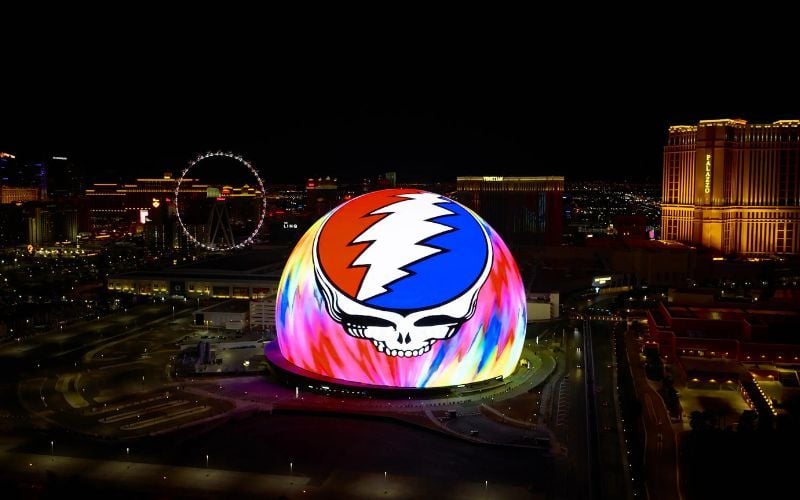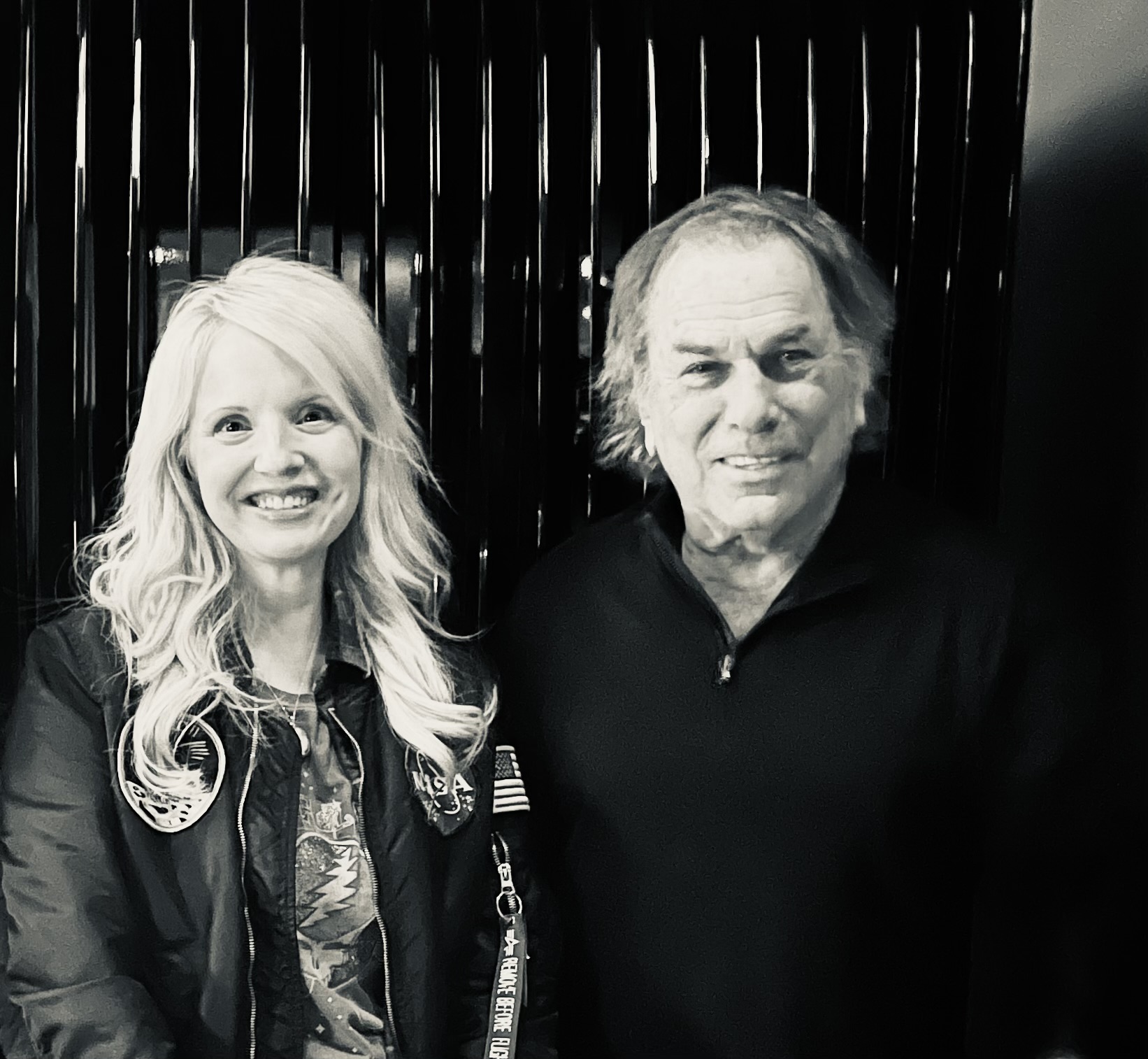SMITHSONIAN ASTROPHYSICAL OBSERVATORY
The Inside Story of How an Interstellar Jam Session Came to the Las Vegas Sphere
A new collaboration between the Smithsonian and Grateful Dead drummer and artistic legend, Grammy award winner Mickey Hart, explores this relationship in a new series of shows at the Las Vegas Sphere.
:focal(211x159:212x160)/https://tf-cmsv2-smithsonianmag-media.s3.amazonaws.com/filer_public/da/9a/da9a4c1a-858d-41ba-bd1a-10107f1abbe3/chandra3.png)
There is an inherent connection between music and space. There’s no rift between science and art, just a riff. They are two sides of the same coin, more alike than different.
A new collaboration between the Smithsonian and Grateful Dead drummer (who now tours with Dead and Company) and artistic legend, Grammy award winner Mickey Hart, explores this relationship in a new series of shows at the Las Vegas Sphere, which began in May and runs through mid-August 2024. This jam session includes a new player never heard from before in one of these shows: our universe itself.

The Dead and Company's shows feature data from the farthest reaches of space in the form of images of stars and galaxies, plus in another form that is a little less common: sound. The inspiration comes primarily from NASA's Chandra X-ray observatory, which is operated by the Smithsonian Astrophysical Observatory. From its perch in a high orbit above the Earth, Chandra looks at X-rays – the same form of light used at the dentist or doctor – coming from objects in space.
I’ve been working with Chandra data since before the telescope was launched into orbit aboard the Space Shuttle Columbia on July 23, 1999. Chandra has always been different than what most people consider telescope do since it looks at X-rays instead of the kind of light humans can see with our eyes. (Astronomers refer to this ‘regular’ kind of light as ‘optical’ or ‘visible’ light.)
/https://tf-cmsv2-smithsonianmag-media.s3.amazonaws.com/filer_public/28/94/28944f67-a763-4b9d-81e8-4daac4005f4d/chandra2.png)
Astronomers need a telescope like Chandra because some of the biggest, brightest, and most exciting parts of the cosmos communicate only through X-ray light. Material swirling around the edge of a black hole or the debris field of an exploded star glows in X-rays, which Chandra can capture and send back to Earth for scientists to analyze.
While the Chandra spacecraft itself goes about a third of the way to the Moon in its orbit, the people who work for the telescope are on the ground. The Smithsonian Astrophysical Observatory, which has its main campus in Cambridge, Massachusetts, was selected by NASA to run the telescope and operate the science functions for the mission.
One of these functions is communicating the results from Chandra in a variety of ways – from press releases to virtual field trips. My role at Chandra is to come up with new ways to get these data out into the world through science driven storytelling. Our group does this through words, images, timelapse movies, virtual reality and, in recent years, sounds to help reach audience members who are blind or low vision.
Working with Dr. Matt Russo and Andrew Santaguida of System Sounds, a Canadian-based group, we investigated turning Chandra data into sounds. This process, known as data sonification, had been done before. Other scientists had translated cosmic data into sound for research, notably Dr. Wanda Diaz Merced an astronomer who has worked at SAO and who became blind as a young adult.
What started out as a project to help people who are blind or low vision enjoy the wonders of the cosmos soon turned out to be more widely appealing. The sonifications became hits on social and traditional media. Some of the sonifications – including one of Chandra data of a supermassive black hole in the Perseus Cluster – went viral, reaching billions of people over the course of a few weeks.
/https://tf-cmsv2-smithsonianmag-media.s3.amazonaws.com/filer_public/93/7b/937b4cb7-37df-449e-94e1-e1e106140371/chandra1.png)
The sonifications also caught the ear of Hart, who had experimented with other data-driven sound works before. He has also worked with the Smithsonian before on a project for Smithsonian Folkways called the "Endangered Music Project." I was able to chat with Hart after he heard about a talk I gave on the Chandra sonifications in Washington, DC, and we soon realized that we shared many of the same goals and interest in reaching wide audiences through sound and experiences. Hart had previously worked with Nobel Prize-winning astrophysicist George Smoot to translate into music for human ears Smoot’s converted light wave traces from the Big Bang.
Hart and I continued our conversations about sonification, light and the Universe. Eventually, he invited me to work with him and his team for upcoming Dead and Co. performances at the Sphere in Las Vegas.

What unfolded was a cosmic collaboration to incorporate celestial data ranging from intimate scenes of stellar birth to some of the largest and most distant vistas in the Universe where early black holes were forming.
Hart and his team incorporated aspects of those data into the show, and notably during his “Drums and Space” segment of the performance, a tradition dating back to the Grateful Dead shows in the 1970s. Drums and Space is an approximate 20-minute-long improvisational free form celebration of percussion and rhythm played during the concert that now also includes data from space.
As important as X-ray data from Chandra are, they are made even more powerful when combined with information from other telescopes. The different kinds of light can be thought of as ingredients in a great meal. If you are cooking, you need to use the right amounts in combination with the others to make something taste delicious.
Astronomy in some ways is similar. X-rays from Chandra can be added to infrared data (another form of light) from the James Webb Space Telescope or optical light (the kind humans see with our eyes) from the Hubble Space Telescope. Taken together, these blended data sets not only “taste” better but are more nutritious.
This means that multi-wavelength astronomy – that is, when more than one kind of light is used – makes even more spectacular images and sonifications, it also gives scientists more information about the objects in space they are studying.
The performances at the Sphere with Mickey Hart, the Dead and Company, and Chandra and other data of our universe celebrate this. Each night, they showcase different images from the cosmos, and weaving in sounds inspired by space. These multimedia, multiwavelength science and music performances present the beauty of our universe, how we learn about it, and how we process it as a human experience here on Earth.
These shows are, in my opinion, a reminder that science and art are not separate entities but different sides of the same coin. The collaboration with Hart and Dead and Company allows us to enjoy a feast for the eyes, ears, mind, and heart. By breaking down artificial barriers between disciplines, we can take people from the edge of their seats to the edge of the Universe and back again through data, music, and information. What a long, strange (and wonderful) trip it is.